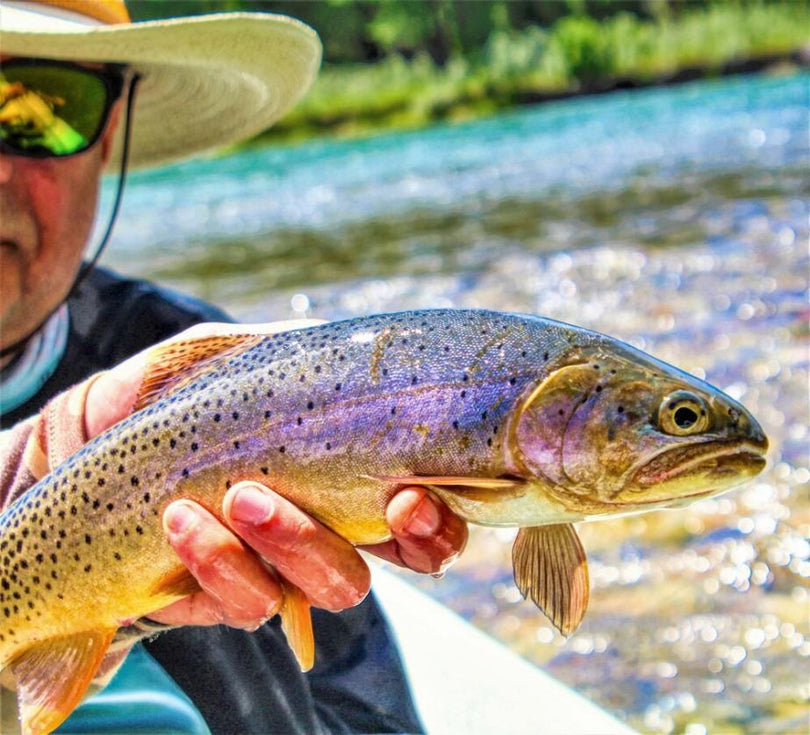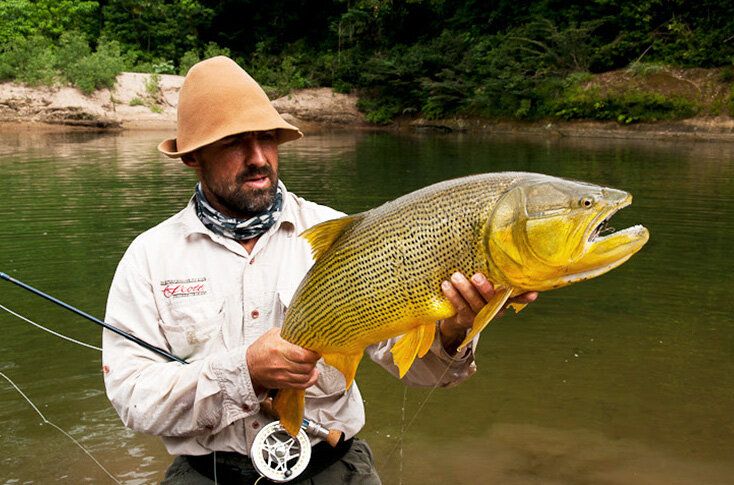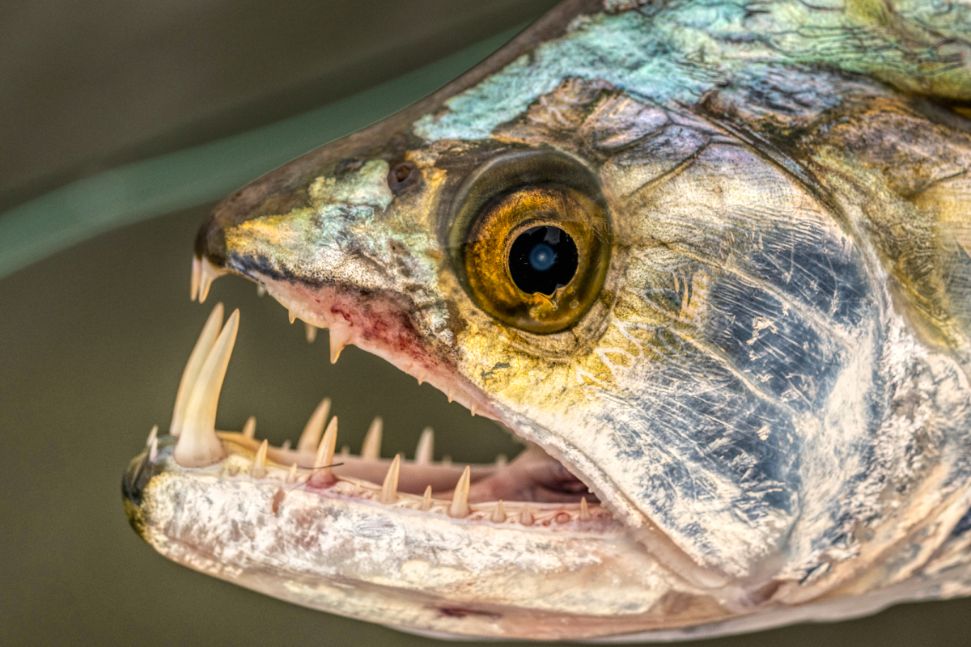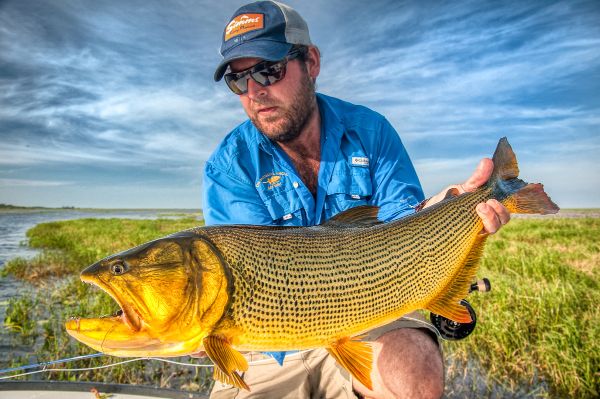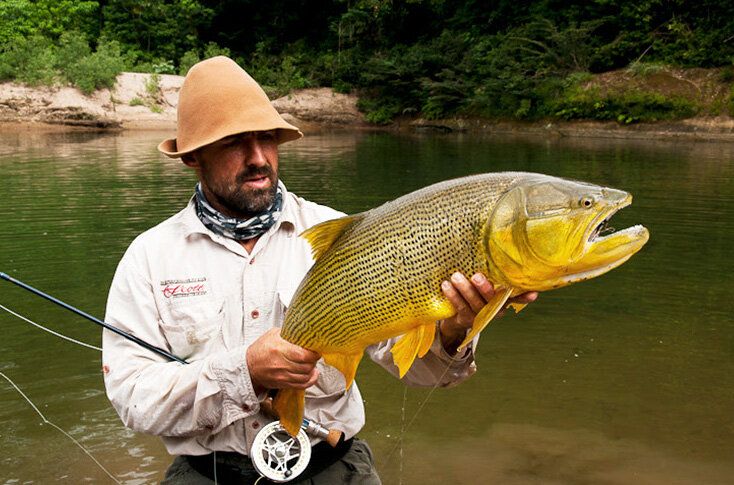
Golden Dorado
Dorado, originates from the Latin word for gold. The golden dorado has a large head, with powerful jaws filled with sharp teeth. Adults are yellow-golden in color, but immatures are more silver in color. The average size of the golden dorado is about 6.6–22 pounds. The largest recorded size is 51 inches in length and 75 pounds in weight. The golden dorado is native to warm freshwater habitats in southern Brazil, Paraguay, Uruguay, Bolivia and northern Argentina. It is generally a solitary species, but migrates in groups. The golden dorado is the apex predator in its freshwater habitat. They are primarily piscivors, eating a wide variety of fish, but also feed on on large insects and small vertebrates like rodents, lizards and birds. The golden dorado is highly sought-after by anglers, both for its appreciated meat and its fighting ability. The aggressive nature of the dorado, its high jumps, fighting strength and stamina have made it a highly sought catch. The Dorado is an eager hunter but can be a lazy chaser. Anglers make use of either very slow or very fast movement of the flies to spark attacks by the dorado, depending on the region and season, denoting a gregarious behavior and ambush feeding strategy.


